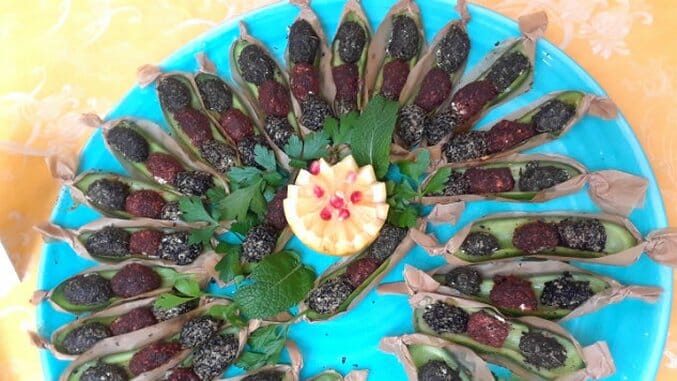America, Head for the Other Border: Canada
Terroir Explores Canada's Vibrant Culinary Landscape

Newcomer Kitchen’s labneh trio at Terroir featured the pressed yogurt cheese rolled in mint, nigella seeds, and a sumac and Aleppo pepper blend, served in mini Lebanese cucumbers. (Labneh photo by Dakota Kim. Fiddlehead caviar preview photo by Michelle Doucette.)
The U.S. can be such a snob when it comes to Canada. We think of the vast ten-province land almost as little as we do our most northern territories. In the past decade, however, there’s been a surge of interest Stateside in French Canadian food — the maple syrup-drenched Québécois food seemingly aggressive enough to merit our American fried-food-and-meat interests. Poutine has come stateside, as has smoked meat, appealing to Pommes Frites and Katz’s-loving New Yorkers.
But when we think mostly of Montreal, we neglect a land as vast as our own, culinarily speaking. An adventure trip to British Columbia and its cold coastal Discovery Islands alerted me to the wealth of uni in its waters, so plentiful that my kayak guide told me it was exported to seafood-mad Japan. Whether picking up ochre sea stars that curled away from our fingers, feasting on tender trout caught before my very eyes, or watching boys yank bright red crabs from shallow tidal pools, I wondered what else I was missing about Canada.
-

-

-

-

-

-

-

-

-

-

-

-

-

-

-

-

-

-

-

-

-

-

-

-

-

-

-

-

-

-

-

-

-

-

-

-

-

-

-

-








































